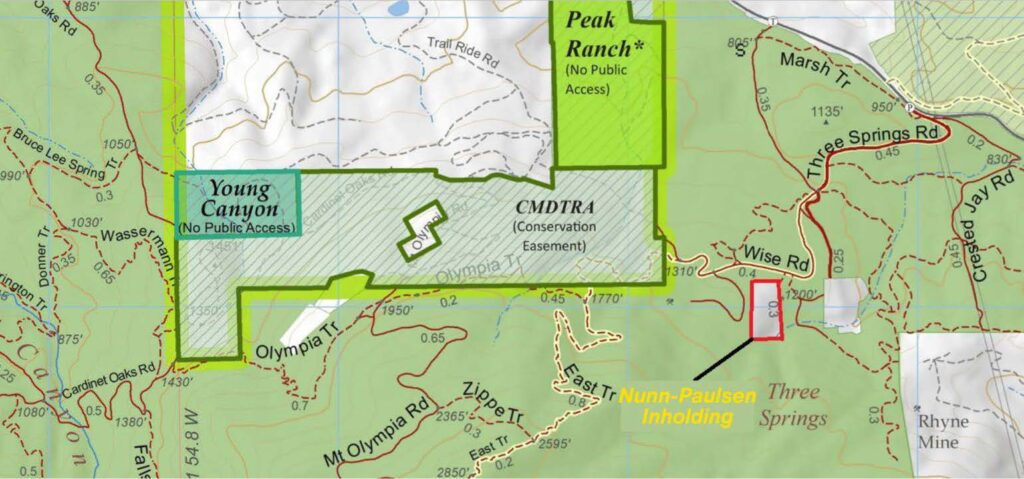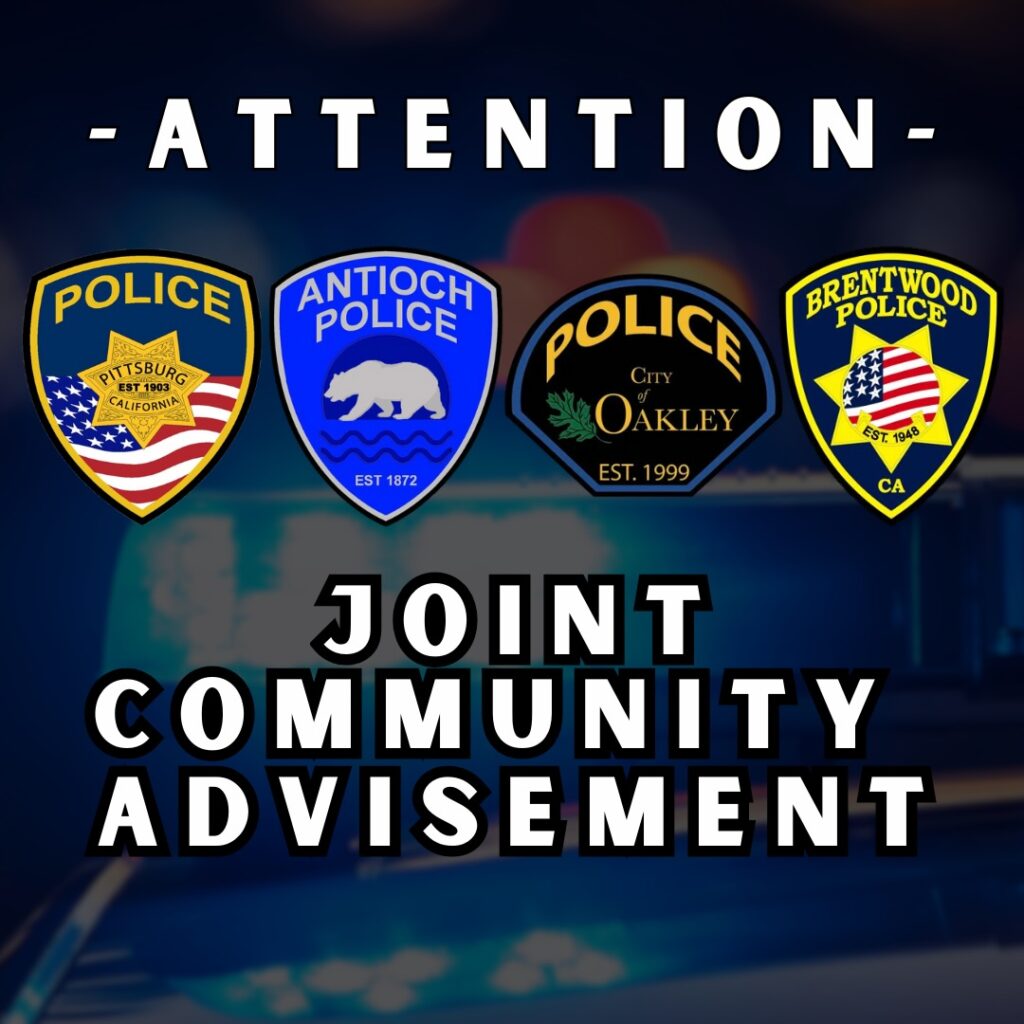By Brentwood Police Department
On Saturday, December 6, 2025, at around 8:09 a.m., Brentwood officers were dispatched to a veterinarian hospital located on the 1200 block of Central Blvd. for a report of the business possibly being burglarized.
When officers arrived on scene they observed one of the glass doors to the business had been shattered. Officers checked the business and did not locate any suspects inside.
During the initial investigation, it was determined, based on surveillance footage, that on December 6, 2025, shortly after 6:00 a.m., two suspects broke the glass door to gain access to the business. While in the business the suspects, both wearing masks attempted to gain access to the cash register but were unsuccessful. The suspects then took specially made bags containing urns with pet ashes. The two suspects then exited the business a few minutes later through the same broken glass door and left the area by unknown means.
This investigation is ongoing and anyone with any information regarding this investigation is encouraged to contact the Brentwood Police Department at 925-809-7911. Callers may remain anonymous.
Read More62-year-old Pleasant Hill woman sentenced to prison for embezzling from charity serving young people
Will serve over 2 years for taking over $1.6 million
Spent money on first-class airfare, Warriors game floor seats, 49ers game box seats, Hawaii condo
Restitution amount to be decided later
By Michelle Lo, PIO, U.S. Attorney’s Office Northern District of California
OAKLAND – Carrie Lynn Grant was sentenced to 27 months in federal prison for embezzling over $1.6 million from a Northern California charity organization that provides educational materials and programs to prepare young people to succeed in a global economy. U.S. District Judge Araceli Martínez-Olguín handed down the sentence this week.
Grant, 62, of Pleasant Hill, California, was indicted by a federal grand jury on July 22, 2024. Grant pleaded guilty on August 11, 2025, to one count of wire fraud. According to the plea agreement and court documents, over a period of years from November 2017 to June 2023, Grant abused her role as the finance manager of the charity, depositing charity money into her personal account while creating fraudulent records to cover her tracks. Grant spent the money on, among other things, first-class air travel, floor seats for a Golden State Warriors game, box seats for a San Francisco 49ers game, and a condominium in Hawaii. In total, Grant stole more than $1.6 million dollars from the non-profit organization.
United States Attorney Craig Missakian and FBI Acting Special Agent in Charge Agustin Lopez made the announcement.
In addition to the prison term, Judge Martínez-Olguín also sentenced the defendant to a three-year period of supervised release. The Court will determine the amount of restitution Grant must pay at a later date. The defendant will begin serving the sentence on March 9, 2026.
Assistant U.S. Attorney Evan M. Mateer is prosecuting the case with the assistance of Christine Tian and Amala James. The prosecution is the result of an investigation by the FBI.
Case No. 24-cr-00403-AMO
Electronic court filings and further procedural and docket information are available at https://ecf.cand.uscourts.gov/cgi-bin/login.pl. Judges’ calendars with schedules for upcoming court hearings can be viewed on the court’s website at www.cand.uscourts.gov.
Read MoreMany by groups of juveniles
By Pittsburg Police Department
Community Advisement:
We’d like to remind everyone to keep doors locked and windows secured, especially overnight.
Detectives are currently looking into a series of residential burglaries that have occurred in Pittsburg, Antioch, Oakley, and Brentwood. In many of these incidents, groups of juveniles have entered through unlocked doors, sliding glass doors, or unsecured windows – sometimes by removing window screens. They appear to be looking primarily for vehicle keys, which has unfortunately led to several stolen vehicles.
To help keep your home and property safe, please consider placing your vehicle keys in a secure, less visible area inside your residence rather than near entryways, kitchen counters, or tables.
Our police departments are actively investigating these cases working with the Contra Costa County District Attorney’s Office. In the meantime, a few simple preventions steps can go a long way in helping protect our community.
Thank you for your cooperation, and please stay safe.
Read More
San Francisco Giants player Willie Mays in 1955 posing for the camera of an Associated Press photographer. Public domain. Source: Wikpedia
Daniel Damato faces 20 years in prison and $250,000 fine
By Michelle Lo, PIO, U.S. Attorney’s Office, Northern District of California
OAKLAND – Daniel Damato pleaded guilty in federal court Monday afternoon, Dec. 8, 2025, to wire fraud in connection with his sales of fraudulent sports memorabilia. Damato also admitted that he attempted to obstruct the FBI’s investigation into his criminal conduct.
Damato, 42, of Concord, California, was charged by information on October 20, 2025, with one count of wire fraud. The information alleged that between 2022 and 2024, Damato, a sports memorabilia dealer, doctored and gave false provenance to valuable items to make them appear as authentic sports collectibles, and then attempted to sell the items to unsuspecting buyers at inflated prices.
In pleading guilty, Damato admitted that in 2023, he sold for $100,000 a baseball bat that he falsely represented as having been used by Willie Mays in the 1954 World Series. Despite his assertions to the contrary, the bat Damato sold for $100,000 had not been used in the 1954 World Series and was in fact a “factory error” bat that was an inch shorter than what Mays used during his career. After the victim buyer sent Damato $100,000 for the supposedly game-used bat, Damato did not send him anything.
Damato also sold other fraudulent items, including a jersey he falsely marketed as having been worn in a game by Mays that Damato sold for $50,000.
After the FBI executed a search warrant on his residence in October 2024, Damato contacted at least one potential witness in an attempt to obstruct the government’s investigation into his conduct.
United States Attorney Craig H. Missakian and FBI Acting Special Agent in Charge Agustin Lopez made the announcement.
Damato’s sentencing hearing is scheduled for March 23, 2026, before District Judge Araceli Martínez-Olguín. Damato faces a maximum statutory penalty of 20 years in prison and a $250,000 fine. Any sentence will be imposed by the Court after consideration of the United States Sentencing Guidelines and the federal statute governing the imposition of a sentence, 18 U.S.C. § 3553.
Assistant U.S. Attorney Abraham Fine is prosecuting the case with the assistance of Amala James. The prosecution is the result of an investigation by the FBI.
Case No. 25-cr-0344-AMO
Electronic court filings and further procedural and docket information are available at https://ecf.cand.uscourts.gov/cgi-bin/login.pl. Judges’ calendars with schedules for upcoming court hearings can be viewed on the court’s website at www.cand.uscourts.gov.
Read MoreBy Allen D. Payton
In a Facebook post on Saturday, Dec. 6, 2025, the Hercules Police Department announced they were actively investigating a suspicious death that occurred on Spinel Court, and while the investigation was ongoing, they reassured the public that there was no threat to community members at the time.
Officers and Detectives were on scene and conducted a thorough investigation to determine the circumstances surrounding this incident.
Later in the day, the Hercules PD posted, “We have successfully completed our investigation and are no longer asking community members to avoid the area. We would like to thank everyone for their cooperation during this incident and would like to once again, assure community members there is no danger or threat from this incident.”
Anyone who may have seen or heard anything, or who has information that could assist investigators, is urged to contact Detective Sgt. Tafesse at 510-799-8271 or etafesse@herculesca.gov.
Read MoreFor Selective Traffic Enforcement Program
By City of Hercules
At the Nov. 12 City Council meeting, the Hercules Police Department accepted a $75,000 Selective Traffic Enforcement Program (STEP) Grant from the California Office of Traffic Safety (OTS). This funding will support traffic enforcement efforts that reduce impaired driving and other primary collision factors.
“This grant serves our commitment to keeping Hercules’ drivers and pedestrians safe,” said Police Chief Joseph Vasquez. “With this funding, we are able to further educate our community on safe driving practices and enforce regulations on speeding and impaired driving.”
According to the staff report for the agenda item, “The grant will allow the City to focus on a comprehensive approach to enforce, educate, and encourage compliance with seatbelt use, impaired driving, speed limit, and other traffic laws. Education and enforcement are two very important components of collision reduction. The acceptance of the grant will allow the Hercules Police Department to bolster its enforcement and education efforts in the aforementioned areas of concern.”
The STEP grant will enhance the City’s ongoing efforts to improve roadway safety by focusing on critical enforcement areas such as impaired driving, distracted driving, pedestrian safety and seatbelt and speed laws while also supporting community education initiatives that encourage safe driving behaviors. The funding will allow the Hercules Police Department to perform overtime operations for DUI checkpoints, saturation patrols and traffic enforcement operations linked to distracted and impaired driving.
Hercules has previously used STEP grant funding to purchase electronic citation writers, collision-investigation software and a speed trailer with a digital message board for special events, road closures and speed deterrence. This new funding will allow the Hercules Police Department to continue strengthening its enforcement and education efforts.
Read MoreBob Nunn donates “Nunn-Paulsen Inholding” in memory of his father, Ron
“when he could look and see Mount Diablo, he knew he was home”
New law to expedite land acquisitions for state parks
By Laura Kindsvater, Senior Communications Manager, Save Mount Diablo
MOUNT DIABLO, CA— One of Mount Diablo’s last privately owned inholdings, rugged and biodiverse, is now permanently protected from development.
On December 2, 2025, Bob Nunn generously donated five gorgeous acres (known as the “Nunn-Paulsen inholding”), surrounded on four sides by Mount Diablo State Park, to Save Mount Diablo in memory of his late father, Ron Nunn, who passed away in August.
The project has taken just over three months from concept to close of escrow.
This incredible gift will bring us one step closer to making the mountain whole and protected for current and future generations.
Protecting inholdings like this is critical to maintaining the integrity of Mount Diablo and Mount Diablo State Park.
These privately held parcels have the potential to disrupt and threaten conservation efforts in the surrounding park if the inholdings were to be developed or poorly taken care of.

Location of the Nunn-Paulsen inholding on the northern slopes of Mount Diablo. Map graphic: Save Mount Diablo
“On behalf of Save Mount Diablo, I thank Bob Nunn for his generous donation of the strategic Nunn-Paulsen property to our organization in honor of his father, Ron Nunn,” said Ted Clement, Save Mount Diablo’s Executive Director.
“This property is on the slopes of Mount Diablo, and is an inholding surrounded on all sides by Mount Diablo State Park. Privately owned inholdings within public parks are major land acquisition priorities for Save Mount Diablo, so we are deeply grateful that this year our wonderful supporters enabled us to complete two inholding acquisitions within Mount Diablo State Park, the ‘Balcerzak inholding’ and now the ‘Nunn-Paulsen inholding.’
“We look forward to working with our good partner California State Parks so that we can eventually transfer these inholdings to them with the assistance of a new law we helped champion to make such acquisitions by state parks easier.”
New Law to Expedite Land Acquisitions for State Parks

View of Mount Olympia and North Peak, at the base of which sits the Nunn-Paulsen inholding. Photo: Scott Hein. Map inset of Mt. Diablo State Park peaks and trails. Source: trailmeister.com
We were delighted when Senate Bill 630 (SB 630) was signed into law on October 13th of this year as a result of persistent efforts from us and a dedicated working group of conservation organizations that we helped start last year.
For nearly 20 years, Mount Diablo State Park was unable to add any new land because of the onerous requirement that California State Parks gain approval from other agencies for even minor acquisitions, along with other issues.
The new law will expedite qualifying land acquisitions for California State Parks by allowing the addition of lands, with acquisition costs of $1 million or less, to existing state parks without the need for multiple agency approvals.
With this streamlined process, we are hopeful that inholdings and adjacent lands will now be more easily added to Mount Diablo State Park.
Thankfully, this year, Save Mount Diablo completed the purchase of the 10-acre Balcerzak inholding within Mount Diablo State Park on September 2nd by paying off the $537,500 mortgage so that our organization now owns the property free and clear.
Acquiring and protecting inholdings like the Nunn-Paulsen and Balcerzak inholdings are major accomplishments in our ongoing mission to save Mount Diablo and its sustaining wild lands.
The Nunn Family and Save Mount Diablo
For many years, Save Mount Diablo has deeply appreciated the partnership and support of the Nunn family. The Nunns have deep agricultural roots in Brentwood going back to the 1880s.
Fifth- and sixth-generation Brentwood farmers, they’ve also been involved in development of some of their lands into communities like the retirement community Summerset, and oil and gas, while reinvesting in other agricultural areas.
Responsible land management has always been a key practice of Three Nunns Farm, which is still a thriving family enterprise today.
With Blackhawk Development Company, the Nunns have been involved in many development-conservation projects, like Trilogy at the Vineyards on the remnant of the Cowell Ranch, where 90 percent of the land became a new state park and 10 percent was developed.
The Nunn family has been a major factor in Brentwood’s success.
Bob Nunn has also been a longtime friend and supporter of Save Mount Diablo. On August 20th, he offered to donate the Nunn-Paulsen inholding to Save Mount Diablo.
In the early 1990s, Bob was looking for a place to live, and his dad, Ron Nunn, knew a landowner, Dr. Warren Wise, who owned a property near the corner of Marsh Creek Road and Morgan Territory Road, where Save Mount Diablo made its first acquisition in 1976.
Ron Nunn and Dr. Wise both attended the University of the Pacific in Stockton. On the slopes off North Peak, the Wise property had been on our acquisition lists from the first list in 1972.
Bob called us and said, “There’s this property, it’s 83 acres with an old house I’m going to upgrade, how about I keep five acres and sell you the rest.”
Save Mount Diablo was able to acquire and add the property we named “Three Springs” to Mount Diablo State Park in 1992 thanks to the deal with Bob Nunn. He later served as a member of Save Mount Diablo’s Board of Directors for a time.
His recent thoughtful donation of the Nunn-Paulsen inholding is yet another way the Nunns have helped protect the mountain.
“This donation is being made in memory of my father Ron Nunn, who passed at 92 years of age on August 8, 2025. Although my father had many stories to tell, one that always stuck with me and that I also share is when he could look and see Mount Diablo, he knew he was home,” Bob explained, showing how the mountain means a lot to those of us who live in the Mount Diablo area and connects us.
Generosity and gratitude are the fabric of the land conservation community. During challenging times, donations like this are more important than ever. They help protect our natural foundation and quality of life, while also inspiring us.
As a pillar of the early Brentwood community, Ron Nunn was also a longtime supporter of the East Contra Costa Historical Society, working together to preserve Brentwood’s agricultural roots.
The Nunns placed agricultural conservation easements on some properties to permanently protect the farmlands from future development.
In 2015, the Nunns made a landmark deal with the East Bay Regional Park District to sell 646 acres of Nunn family farmland near Knightsen.
This transaction, in partnership with the East Contra Costa County Habitat Conservancy, allowed the East Bay Regional Park District to restore crucial Delta tidal and freshwater wetlands in the area.
A Biodiversity Gem
The Nunn-Paulsen property is a compact and biologically diverse gem. This Marsh Creek watershed location includes two ephemeral streams, harboring a huge variety of plant life on its steep, rocky slopes.
The property contains blue oak and live oak woodland and oak savanna habitat. California red-legged frog and Alameda whipsnake are special status species that are likely to be present on the property. They’re confirmed on the neighboring Three Springs property.
The serpentine rock on the Nunn-Paulsen land provides excellent growing conditions for rare plant species.
A hike there is both adventurous and intimate. In winter especially, the dramatic shape of the land means that storms and seasonal rain bring small waterfalls.
In addition to its important location on the slopes of Mount Diablo, the Nunn-Paulsen inholding is also strategically located in a wildlife corridor between Mount Diablo State Park and Black Diamond Mines Regional Preserve.
An Ambitious Conservation Vision and Growing Success, Piece by Piece

The Corner Piece, purchased by Save Mount Diablo in 1976. At the time, it was four miles from the boundary of Mount Diablo State Park. Today it is part of and connected to the rest of Mount Diablo State Park. Photo: Scott Hein
Save Mount Diablo has acquired and protected many important properties in the area near the recently acquired Nunn-Paulsen inholding.
In 1976, Save Mount Diablo’s very first acquisition was in this same area: The Corner Piece. The Corner Piece is 117 acres of blue oak woodland at the corner of Morgan Territory and Marsh Creek roads.
Soon after Save Mount Diablo acquired The Corner Piece, Mount Diablo State Park protected North Peak, allowing the creation of the Olympia Trail to Mount Olympia.
In 1992, Save Mount Diablo acquired and transferred the Three Springs property to California State Parks for inclusion in Mount Diablo State Park.

The Three Springs property. Save Mount Diablo was able to acquire and add the Three Springs property to Mount Diablo State Park in 1992 thanks to a deal with Bob Nunn. Photo: Scott Hein
In 1994, Save Mount Diablo’s community-funded purchase of the 333-acre Chaparral Spring parcel turned it into a thriving, protected oasis home to wildlife like the golden eagle and endemics like the Mount Diablo globe lily—and a critical step in creating a Mount Diablo State Park wildlife and recreational corridor.
Later we transferred the property to East Bay Regional Park District. Save Mount Diablo, the park district, and the East Contra Costa County Habitat Conservancy have since protected several thousand acres to connect the two parks.
Save Mount Diablo protected the botanical diversity of Young Canyon by preserving this property in 2006 in what we call the “Missing Mile” on the slopes of North Peak.
It nurtures well over a hundred species of flowers, including five California endemics, because it’s crossed by the only band of serpentine on Mount Diablo.
The landscape of Young Canyon includes a 1,420-foot knoll, a mossy, fern-filled stream canyon, and a rocky meadow of wildflowers where you’ll often see hawks and turkey vultures riding the constant breeze.
The next year, Irish Canyon was Save Mount Diablo’s breakthrough purchase, stopping development speculation and expanding the Mount Diablo–Black Diamond wildlife corridor.
This land is a vital 320-acre watershed property with over 297 species and a permanent pond.
In 2022, Save Mount Diablo successfully acquired a very important conservation easement from the Concord Mt. Diablo Trail Ride Association.
Save Mount Diablo’s conservation easement permanently protected from development 154 acres that are a prominent part of the Mount Diablo high peaks ecosystem, and another step in filling in the North Peak “Missing Mile.”
Krane Pond is one of Mount Diablo’s largest water sources, drawing all sorts of creatures, like bobcats, red-legged frogs, and migrating birds—so Krane Pond’s acquisition and protection by Save Mount Diablo in 2023 was vital to local habitat conservation.
It was another step in filling in the “Missing Mile.”
The Nunn-Paulsen property had been one of the few remaining privately owned inholdings not yet protected on Mount Diablo, and that changed on December 2nd with Save Mount Diablo’s successful acquisition of the land, thanks to Bob Nunn.
Holiday Gift, Gratitude, and What’s Next?
Bob Nunn’s generous donation of the strategic Nunn-Paulsen inholding on the slopes of Mount Diablo to Save Mount Diablo is a wonderful holiday gift for the mountain and our communities, including the people, flora, and fauna of the area.
Our stewardship team is excited to begin caring for the property.
At Save Mount Diablo, we are grateful for our supporters and the progress they have helped our organization make this year in successfully advancing our land conservation mission, including helping advance acquisition priorities for California State Parks.
The new law we helped champion (SB 630) that will streamline the acquisition process for California State Parks, and our completing the Balcerzak and Nunn-Paulsen inholding acquisitions, are major accomplishments.
SB 630 covers many properties our organization has been working to convey to California State Parks for addition to Mount Diablo State Park (the 101-acre CEMEX parcel, parts of Curry Canyon Ranch, the Balcerzak inholding, the Nunn-Paulsen inholding, the Viera North Peak property, etc.).
We look forward to working with California State Parks in the new year to start utilizing the new law to add these lands to Mount Diablo State Park.

Map showing the location of the Nunn-Paulsen inholding in Mount Diablo State Park. Map: Save Mount Diablo
For more information about Save Mount Diablo visit savemountdiablo.org.
Read MoreTraveling 120-150 MPH; held on $1.2 million bail; claimed life of Castro Valley woman
By Ted Asregadoo, PIO, Contra Costa District Attorney’s Office
Martinez, California – The Contra Costa District Attorney’s Office has charged a Pleasanton man with murder in a DUI-related crash in San Ramon.
27-year-old Badal Devendra Dholaria was arraigned today, December 4th at 1:30 pm in Martinez on a five-count felony complaint. In addition to the murder charge [PC 187(a)] that led to the death of a 41-year-old Castro Valley woman, Dholaria is being charged with two counts of driving under the influence of an alcoholic beverage causing injury, and two counts of driving with a .08% blood alcohol content causing injury [VC23153(a) and VC23153(b)]. The DUI-related offenses each come with enhancements alleging great bodily injury both to the woman and a 40-year-old man – also from Castro Valley. (See related article)
On December 3, 2025, the San Ramon Police Department presented its findings to the Contra Costa County District Attorney’s Office. Following their review, Dholaria was charged with one count of second-degree murder, and four counts of felony DUI. His bail has been set at $1.2 million, and he remains in custody at the Martinez Detention Facility.
District Attorney Diana Becton said, “I want to be clear: every DUI-related incident represents a choice — a choice that can kill. If you’re impaired, don’t drive. Every time you get behind the wheel under the influence, you’re gambling with lives. Whether it’s alcohol, marijuana, prescription medications, or illegal drugs, any substance that impairs your ability to operate a vehicle safely makes you a danger on our roads.”
Case No 01-25-04261| The People of the State of California v. Badal Devendra Dholaria
According to the Contra Costa County Sheriff’s Office, the five-feet, three-inch tall Dholaria’s is being held in the West County Detention Facility and his bail was increased from $300,000 to now $1.2 million.
According to localcrimenews.com, he was also arrested by Concord Police on Nov 16, 2025, for resisting, obstructing or delaying and evading a peace officer.
Allen D. Payton contributed to this report.
Read MoreGift Wrapping Event at Barnes & Noble Thursday, Dec. 4; plus, Warm Coat and CANTREE Food Drives and more
By Jody Drewery, President, Women’s Council of REALTORS®
Real Estate is not just about buying and selling homes — it’s about showing up for our community. I’m proud to be a part of the Delta Women’s Council of REALTORS® and the Delta Association of REALTORS® Community Foundation, where giving back is at the heart of what we do.
This season, we have several opportunities to make a difference — and you don’t have to be a REALTOR® to help.
First, join us this Thursday! The Delta Women’s Council of REALTORS® will be at Barnes & Noble in the Streets of Brentwood (2475 Sand Creek Road, Suite 100) for a community Gift Wrapping Event and hosting Adopt-a-Senior.
You can also:
- Donate to the Warm Coat Drive (see above)
- Donate a Gift Card
- Donate canned goods to the CANTREE Food Drive (see below)
Every contribution, big or small, helps someone in need — and with the year many families have had, from economic challenges to government impacts, there has never been a more meaningful time to come together.
If you’d like additional information or want to get involved, please call (925) 818-1977 or visit www.facebook.com/WCRDelta. Let’s collaborate and spread some love throughout our community!
Read More
Gun, drugs and Ziploc baggies shaped and printed like $20 bills confiscated during arrest. Photo: Brentwood PD
Georgia Lee Malone held on $220,000 bail; third arrest this year
By Brentwood Police Department
Early Tuesday morning, Dec. 2, 2025, a Brentwood Police Officer conducted a traffic stop in the area of Lone Tree Way and Shady Willow Lane for a vehicle code violation. During the contact, the driver, identified as 49-year-old Georgia Lee Malone (born 7/23/1976) was found to be a convicted felon in possession of a loaded firearm, drugs, a scale, multiple Ziploc baggies shaped and printed like dollar bills, and a fake ID.
Malone was arrested and transported to the Martinez Detention Facility.
We remain committed to keeping our community safe, and proactive enforcement like this helps prevent dangerous situations before they occur.
According to the Contra Costa County Sheriff’s Office, the five-foot, three-inch tall, 220-pound Malone is now being held in the West County Detention Facility on $220,000 bail.
According to localcrimenews.com, Malone is Black and from Pittsburg and was previously arrested four times, including twice more this year, by Contra Costa CHP, Pleasant Hill Antioch Police Departments for petty theft: retail merchandise, receiving known stolen property over $200, possession of narcotic controlled substance, DUI alcohol/drugs, DUI with blood alcohol content level great than .08, and failure to appear on misdemeanor charge.
Allen D. Payton contributed to this article.
Read More



























